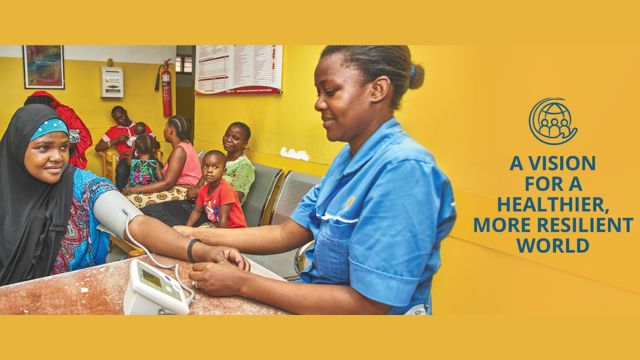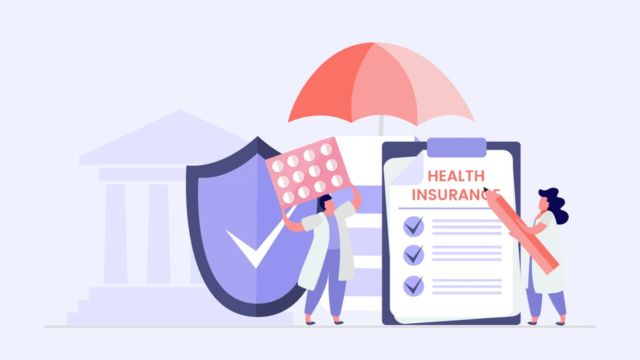Access to healthcare is a basic human right, yet finding free or reasonably priced healthcare can be challenging. It’s critical to understand how to get affordable healthcare, whether you require emergency care, preventive care, or long-term condition management. There are several methods to access government-backed, affordable, or free healthcare services globally, even if the expenses of medical care might differ greatly between regions.
We will examine the global healthcare scene in this extensive guide, emphasizing the best initiatives and resources that give people access to free or reasonably priced medical treatment. Here is all the information you need to get the care you need without going over budget, including information on philanthropic organizations and universal health systems.
1. Understanding Global Healthcare Systems: Free or Affordable Options
Healthcare systems differ vastly from country to country. However, there are three key types of healthcare systems that provide access to free or affordable medical care:
A. Universal Healthcare Systems
Many countries around the world have adopted universal healthcare, where healthcare is provided by the government and funded by taxes or social health insurance contributions. Here are some examples:
- United Kingdom (NHS): The National Health Service (NHS) provides healthcare services to all UK residents, free at the point of use. This includes doctor’s visits, hospital care, and prescriptions.
- Canada: Canada’s Medicare program offers universal coverage to all citizens and permanent residents. Most services, including hospital care, doctor visits, and surgery, are covered by the government.
- Australia (Medicare): Australia’s Medicare program covers medical and hospital services for residents. While there may be out-of-pocket costs for certain treatments, the majority of services are free or highly subsidized.
B. Public Health Insurance Systems
In some countries, public health insurance systems provide affordable healthcare coverage for residents. These systems are often designed to ensure that those who cannot afford private health insurance are still covered. Examples include:
- Germany: Germany has a universal health insurance system, which includes both public and private health insurance options. Public health insurance is based on income and is affordable for most residents.
- France: France offers a public healthcare system called Sécurité Sociale, which covers most medical expenses. Citizens can also purchase additional private insurance for enhanced coverage.
C. Health Insurance for Low-Income Individuals

In countries like the United States, where universal healthcare is not available, government-funded health insurance schemes help low-income individuals access medical care.
- Medicaid: A state and federally funded program in the U.S. that provides free or low-cost healthcare coverage to eligible low-income individuals and families.
- Affordable Care Act (ACA): The ACA ensures that U.S. residents have access to affordable insurance, often with subsidies based on income. Many low-income individuals qualify for financial assistance.
2. How to Access Free or Affordable Healthcare in Specific Countrie
United States
- Medicaid: For low-income individuals and families, Medicaid provides free or affordable healthcare. Eligibility is based on income, household size, and sometimes disability or age.
- How to apply: Visit your state’s Medicaid website, or apply through the HealthCare.gov portal.
- Key Benefits: Covers hospital stays, doctor’s visits, prescription drugs, and more.
- Community Health Clinics: Federally Qualified Health Centers (FQHCs) offer free or low-cost healthcare services to individuals without insurance. These clinics provide primary care, dental care, and mental health services.
- How to find: Search for a nearby FQHC through the U.S. Department of Health and Human Services website.
India
- Ayushman Bharat Scheme: This national health insurance scheme provides financial coverage for medical treatments for low-income families.
- How to apply: Registration can be done through the PMJAY portal or at empaneled hospitals.
- Key Benefits: Coverage of up to ₹5 lakhs per family per year for secondary and tertiary hospitalization.
- Government Hospitals: Many government hospitals in India provide free or highly subsidized services for economically disadvantaged populations. These hospitals offer a wide range of services, including surgery, outpatient consultations, and maternity care.
Germany
- Public Health Insurance (Gesetzliche Krankenversicherung): Most residents in Germany are required to have public health insurance, which is affordable based on income.
- How to apply: Residents can apply through public health insurance providers such as AOK or TK.
- Key Benefits: Full coverage for medical treatment, surgeries, and hospital stays. There are also special schemes for those with low incomes or students.
United Kingdom
- NHS (National Health Service): The NHS provides free medical services, including doctor visits, hospital treatments, and surgeries for residents.
- How to apply: No application is necessary if you’re a resident. Simply register with a local GP (General Practitioner).
- Key Benefits: Free consultations, medical care, and prescriptions. There may be charges for dental care or prescriptions in certain regions.
3. Affordable Healthcare Alternatives for Uninsured or Underinsured Individuals
Not all countries offer universal healthcare, and some residents may face challenges accessing healthcare due to limited insurance coverage. However, there are still several alternatives for obtaining low-cost or free healthcare:
A. Charity and Non-Profit Health Organizations
Numerous organizations provide medical services to individuals who are uninsured or underinsured. Some notable ones include:
- Doctors Without Borders: Provides emergency medical care in conflict zones and areas with limited access to healthcare.
- HealthNet TPO: A global NGO that focuses on providing health services to underserved communities.
- Free Clinics: Many cities host free or sliding-scale fee clinics where medical professionals volunteer their services.
B. Community Health Programs
In both developed and developing nations, community-driven health initiatives can often provide free or low-cost healthcare, such as:
- Mobile Health Clinics: Operate in rural or underserved areas, offering free medical consultations, vaccinations, and maternal care.
- Preventive Care Programs: These programs, offered by governments and NGOs, may include free checkups, vaccinations, cancer screenings, and wellness education.
4. Digital Health: Accessing Affordable Healthcare through Technology
Advancements in telemedicine and digital health have also increased accessibility to affordable healthcare. Some platforms offer free consultations or low-cost services:
- Telehealth Services: Many countries, including the U.S. and the UK, have telehealth services where doctors can provide consultations online for a lower cost than in-person visits.
- Examples: HealthTap, Amwell, and NHS Online Services.
- Digital Health Apps: Various mobile apps are available for managing health conditions and accessing free health advice, such as MyChart or Babylon Health.
5. How to Reduce Healthcare Costs Without Sacrificing Quality
Even in countries with limited public healthcare options, there are strategies to reduce healthcare costs:
A. Shop Around for Medical Services
- Compare Prices: Use platforms that allow you to compare healthcare prices, especially for elective procedures, dental services, and prescription drugs.
B. Preventive Care
- Health Screenings: Take advantage of free or low-cost screenings offered by community organizations or health insurance providers.
C. Generic Medications
- Opt for Generic Drugs: Generic versions of prescription medications are usually much more affordable than their branded counterparts.
Conclusion:
Accessing free or affordable healthcare depends largely on where you live, your income level, and the type of healthcare system in place in your country. However, many resources and government programs are available globally to help you receive the care you need, whether through public health systems, private insurance options, or charitable organizations.
By understanding your healthcare options, leveraging free services, and exploring alternative solutions like digital health, you can ensure that you and your loved ones have access to quality care without financial strain.
Ready to make informed decisions? Explore our resources and get the latest insights on healthcare, technology, and more. Stay connected with Digital India MIB for valuable updates and solutions that matter to you!













